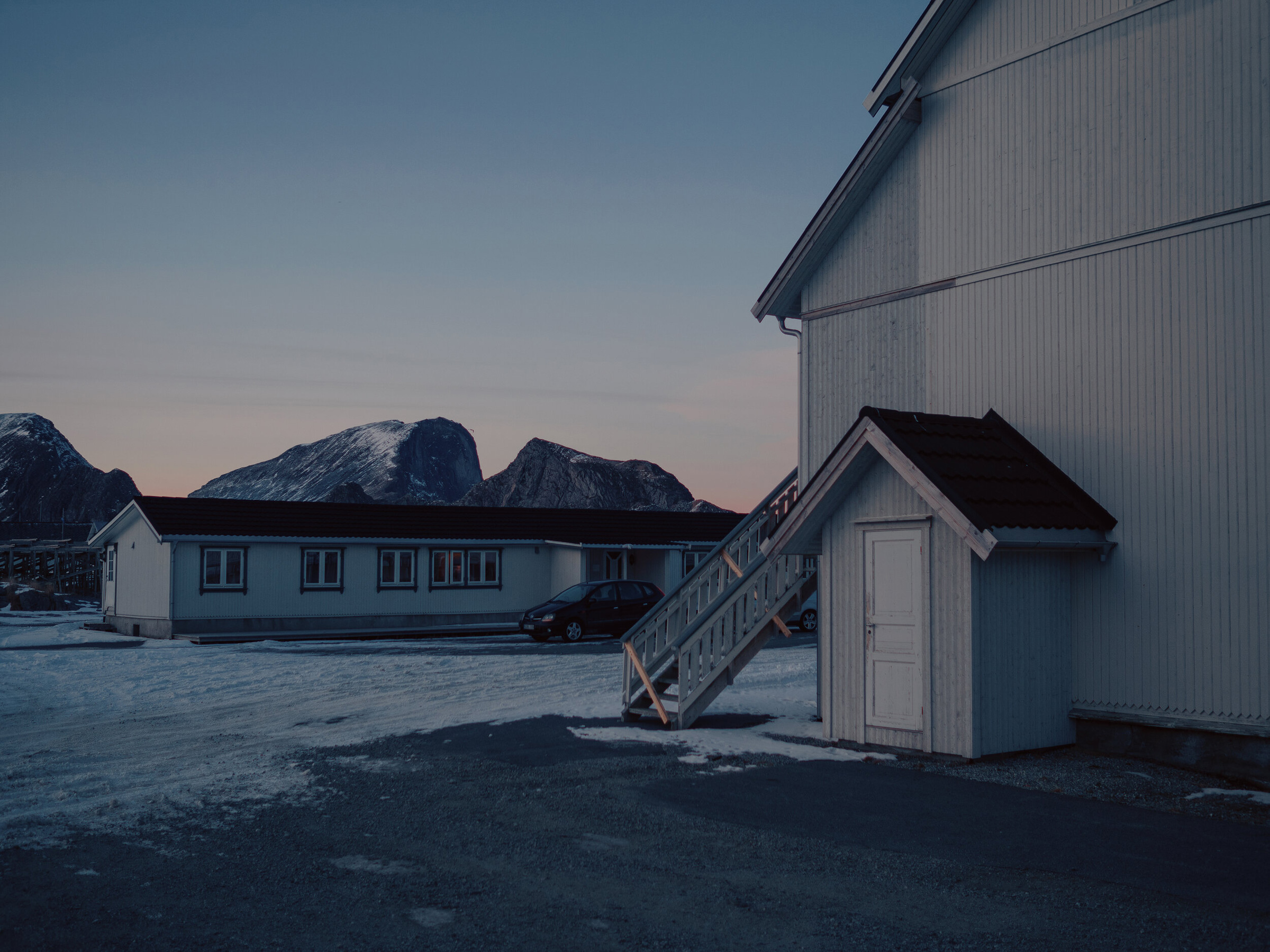



















Credits
http://www.leonardomagrelli.com/





















Credits
http://www.leonardomagrelli.com/
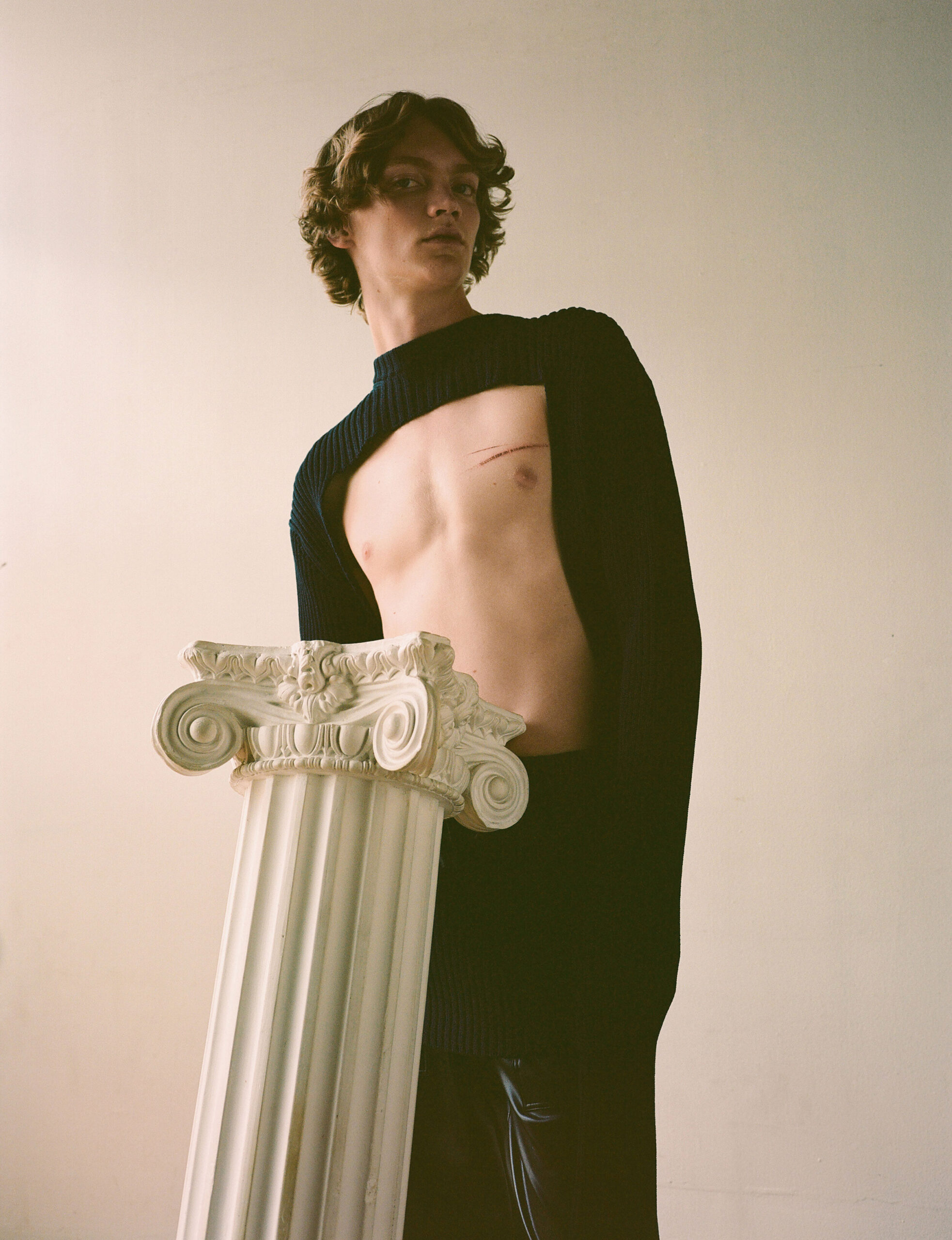

















Team
Photography · BRENT CHUA
Fashion · JUNGLE LIN
Grooming · TAKANORI SHIMURA
Model · HUXLEY KUHLMANN from DNA
Designers
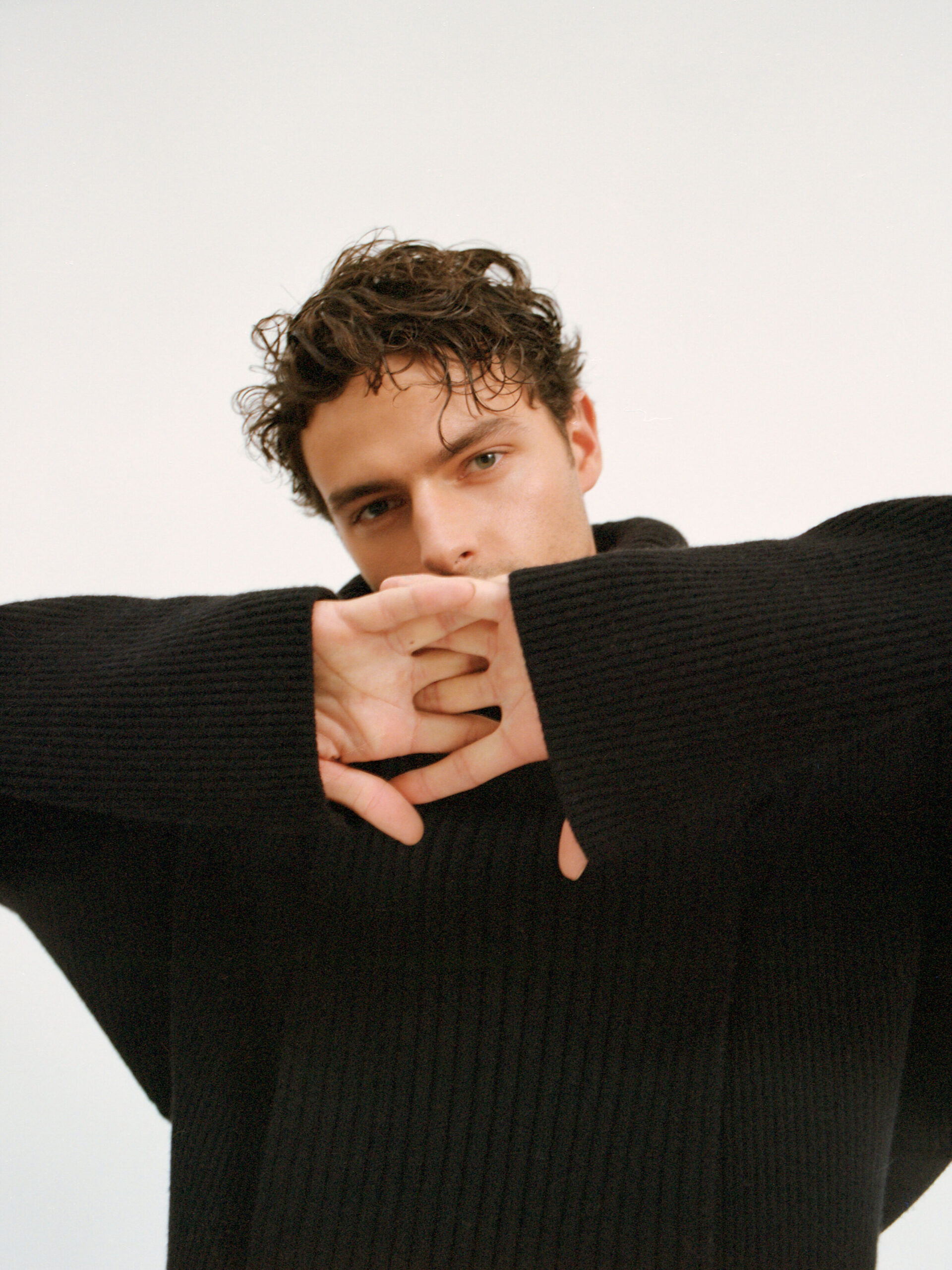
















Team
Photography · Michele Yong
Fashion · NIMA HABIBZADEH and JADE REMOVILLE
Hair · LILLY LIZE
Make-Up · MIKI MATSUNAGA
Model · HANNES from MP Paris
Set Provided by · Habitat Paris
Designers
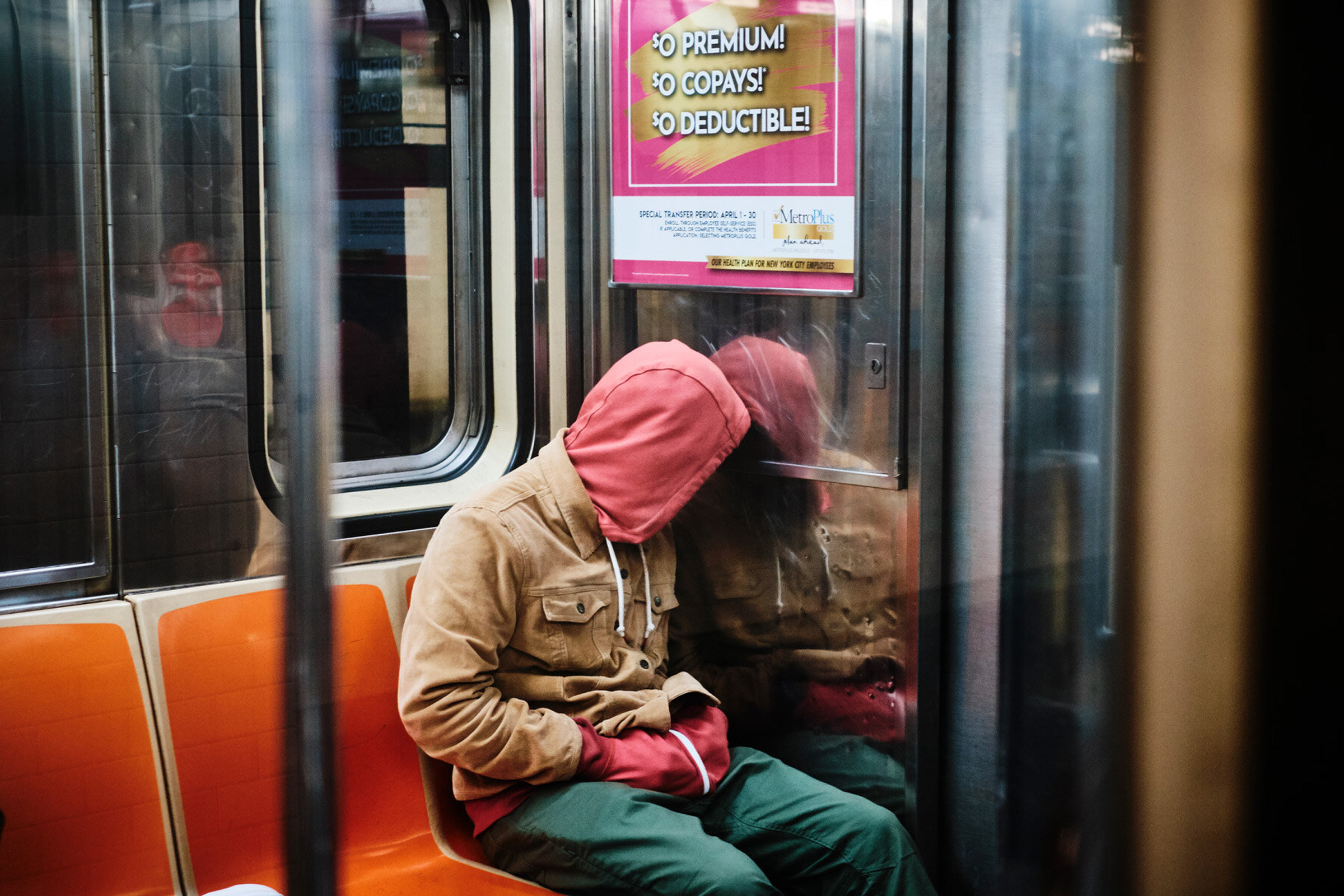















This was my first time in the US and in NYC, a place I literally dreamed about photographing. My mind was full of remarkable images by great street photographers who have roamed these streets before me. Although I had some preconceived ideas and mental images of the city, exploring an unknown place with a camera is always a great discovery. Little by little, stereotypes fall into pieces, and you start creating your own imaginary map of it. You reinvent the city, and by doing so, you reinvent yourself a little too. This process is always exciting, and this excitement can be overwhelming sometimes. In the first two nights, I couldn’t sleep even being too tired, as my mind couldn’t stop thinking about what I’d find the next morning – and if the weather would be good and give me some light to play with. I’d wake up around 6h30, get some cheap coffee and a croissant, and walk, walk, walk, apparently aimlessly, trying to make sense, with my images, of this wonderful mix of chaos, energy, and flux. I’m aware I just scratched the surface of this deep world, and this feeling just makes me want to come back for more.













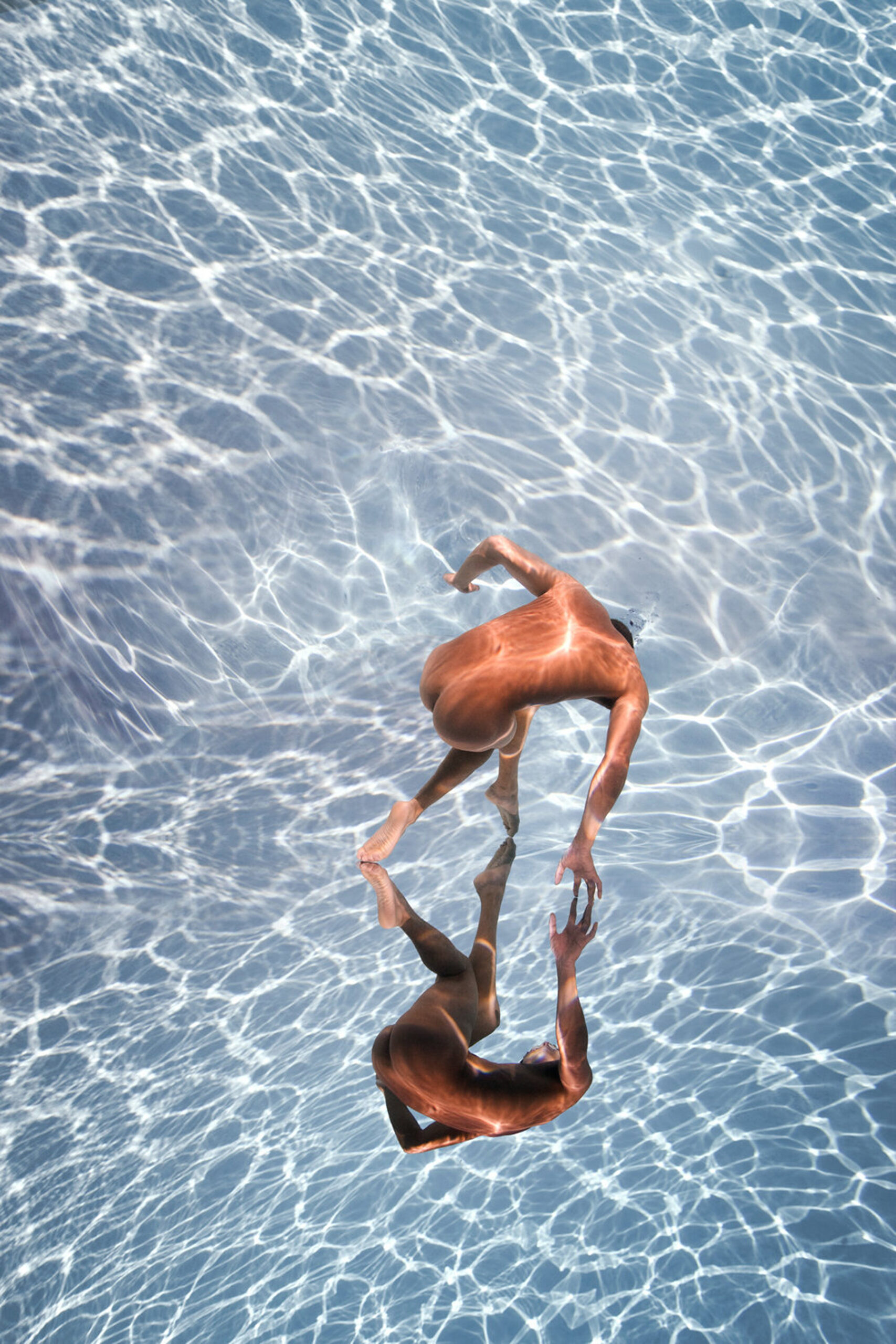
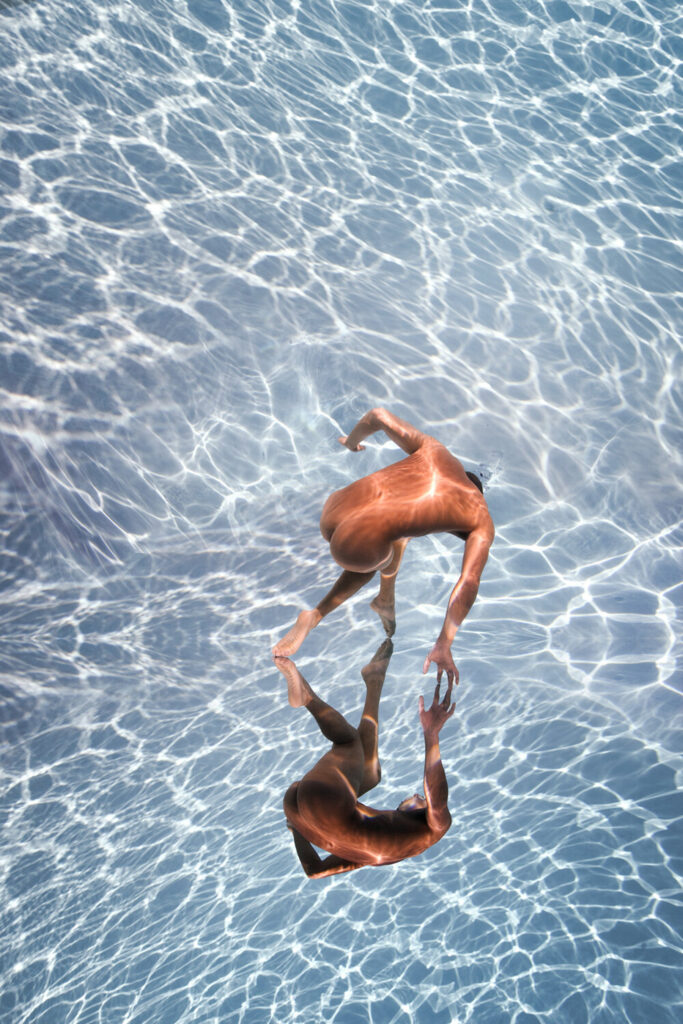
There is an otherworldly quality to Ed Freeman’s images of buildings, where hangovers of the twentieth century, such as motel signs and fast food joints, are captured within a desolate environment. This is deliberate, as Freeman resituates iconic elements of the American Dream within a digitally-configured landscape he has careful created. By inserting different landmarks into the same, but nevertheless slightly altered setting, Freeman challenges the viewer to look more closely at the subject matter, and in turn, at the built environment proper. Freeman’s imagined scenes take on a more obvious appearance in his series of dreamlike underwater nudes. What seem, at first glance, as painterly visions of figures gliding deep below the sea, are, on closer inspection, derived from photographs taken of models shot in a swimming pool. Digital enhancement and manipulation drives Freeman’s work, and by immersing the viewer in this constructed world, the qualities that make up the ‘real world’ return to the fore.
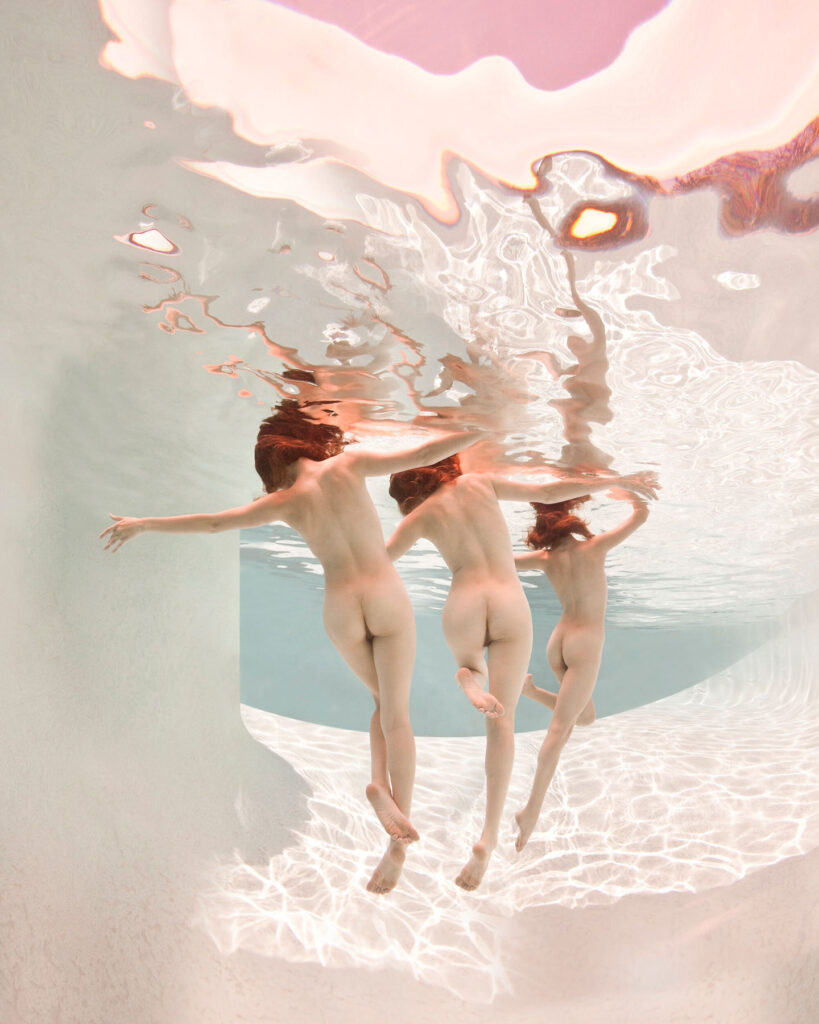
How does your work capture emotion in a way that non-manipulated photography cannot?
Non-manipulated photography is unmatched for capturing emotion. What I can do with manipulation is remove elements that distract from that emotion, modify lighting to enhance that emotion. It’s difficult or impossible to invent emotion where none existed before.
Do you envision the final outcome of an image when you’re taking photographs prior to editing?
Absolutely. When I look in the viewfinder, I see what’s in front of the lens, but I also see what the final print looks like. I’m always very conscious of what I can and cannot do in post-production. When I’m photographing old buildings and I know I’m going to erase the surrounding structures, I’m careful to shoot some nearby empty land to fill in the parts that I’m going to erase. When I’m photographing underwater nudes, I think, “that was an almost perfect body shot. Her eyes were closed, but there’s that great facial expression I shot five minutes ago. I think I can splice that head onto this body. And maybe I have a better foot someplace; I’d better check.”
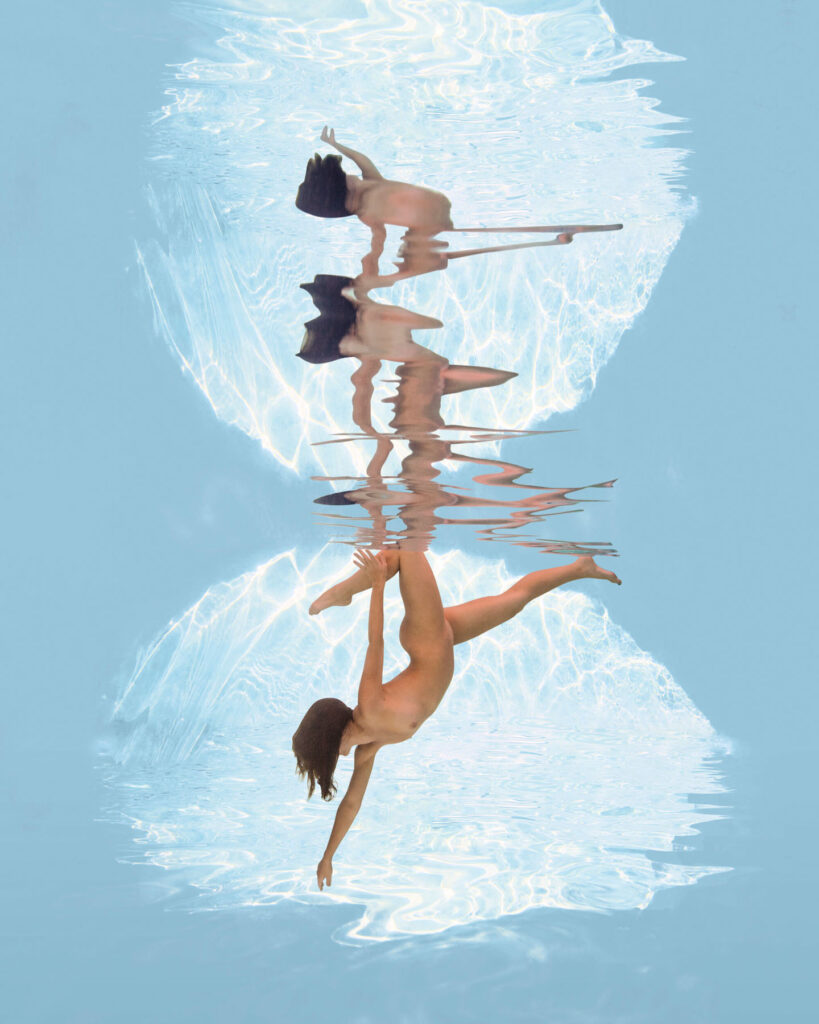
What is the importance for you in documenting the landmarks of a bygone era in the Realty series; What do you want the viewer to take from them?
Viewers can take from my pictures whatever they want; it’s not my job to control their experience. But for me, these old buildings are part nostalgia and part a commentary on the death of the American Dream. I grew up in a time when America was an optimistic land of opportunity. Now it seems to have devolved into a land of xenophobia, racism, polarization and paranoia. These crumbling buildings hark back to a simpler, happier past and by extension, maybe point the way to a happier, albeit less naive future.
Similarly, many of the buildings you have photographed have since disappeared, so what can they tell us about the present and the future?
Everything changes, everything ages and evolves. Today’s hip will be tomorrow’s kitsch, next year’s laughing stock and next generation’s quaint gem waiting to be discovered and revived. That has forever been true yet each generation has to learn it for themselves.
“For me the solution is to be passionately invested in the present, fascinated with the future and at the same time know and love the past – sort of the same way you know and love your goldfish.”
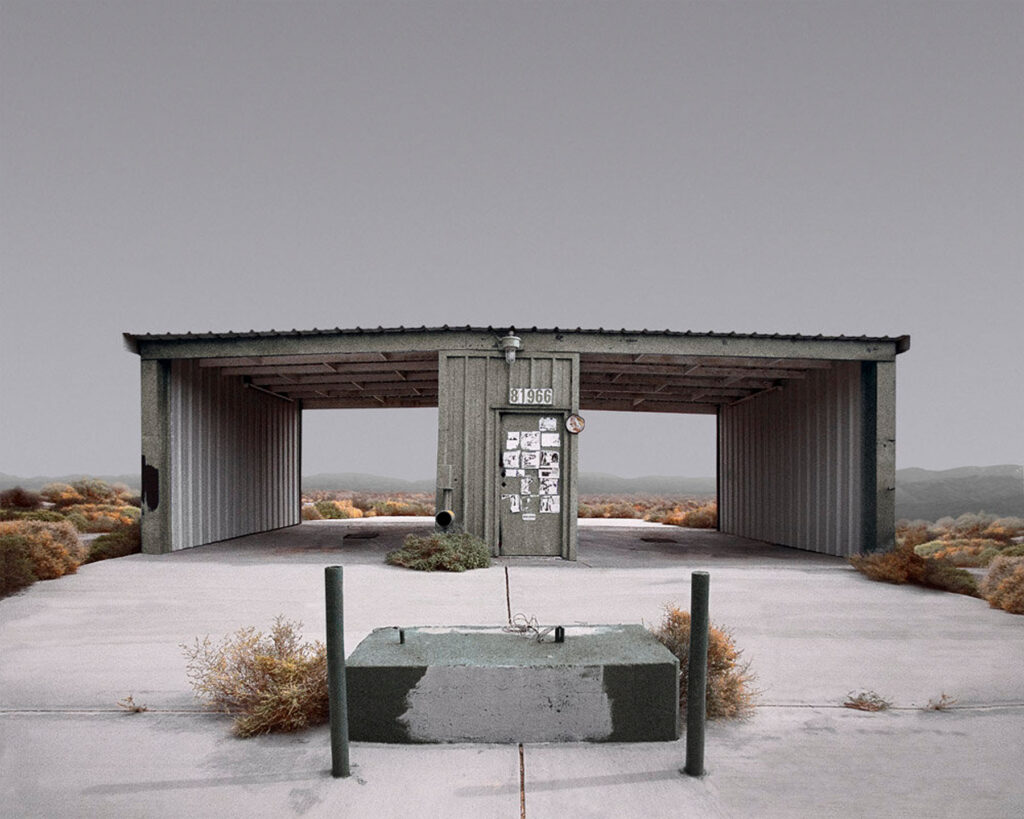
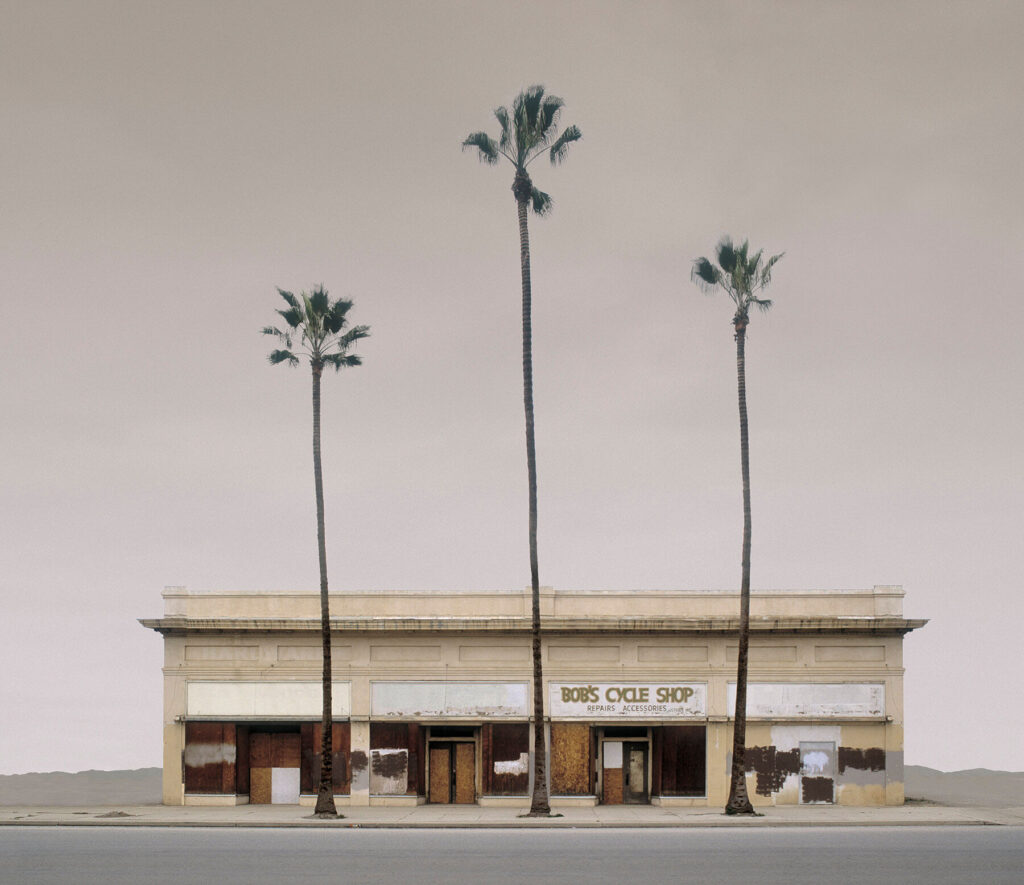
What draws you to the themes you explore?
Well, first of all, I’ve always liked the way people look without their clothes on. I’d probably be a nudist if I weren’t such a prude. That pretty much explains the underwater nudes. Other than that, I have no insights to offer.
“I’m interested in EVERYTHING and if I had enough time, I’d photograph everything. Thank God I don’t because my filing system is complicated enough as it is.”
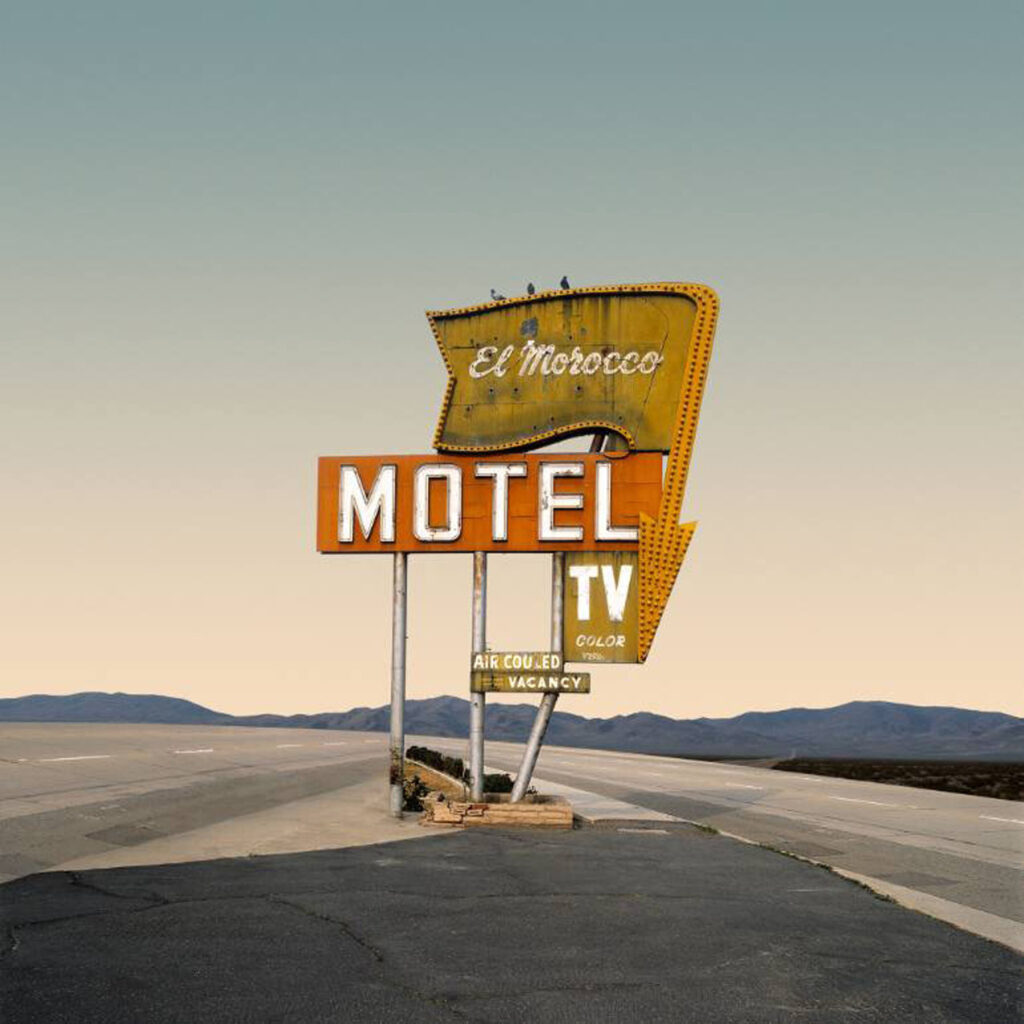
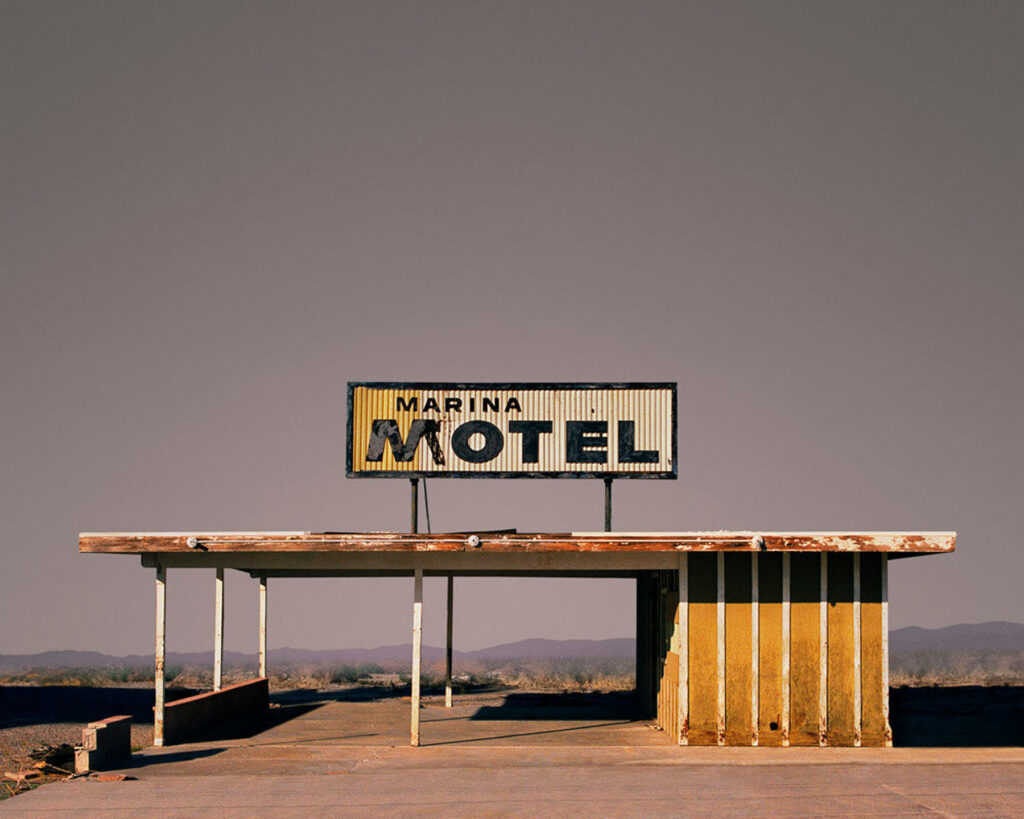
Visually, the Underwater and Realty series could not seem more different, but are there any shared meanings in them?
I don’t deal in messages and meanings; my job is ask questions, not to answer them. Sort of analogous to the chef who might say, “my job is to prepare food, not to eat it.”
Your practice hinges upon digital photography and manipulation; Do you think that over time it will be recognized as its own medium?
Identifying what I do as distinct from traditional photography is not particularly important to me, but I think it is to people who collect photography – they have a legitimate right to know how much manipulation, if any, has been done to an image. Any serious collector of mid-century photography knows that Ansel Adams used every darkroom trick in the book to refine his images, whereas Edward Weston was a purist who never did any modification to his. They both made stunning works of art. These days, we have more ways to manipulate pictures than Ansel ever dreamed of. I’m not sure we have to invent a new term for altered photographs, but we certainly have to be upfront about what goes into the finished picture. Some people look down their noses at extensive manipulation, but most (including me, obviously) just see it as one option among many in contemporary photography. Any technology, including Photoshop, can be used to create art. “Whether or not it’s a great novel depends on the writer, not the typewriter.”
Credits
www.edfreeman.com/collections
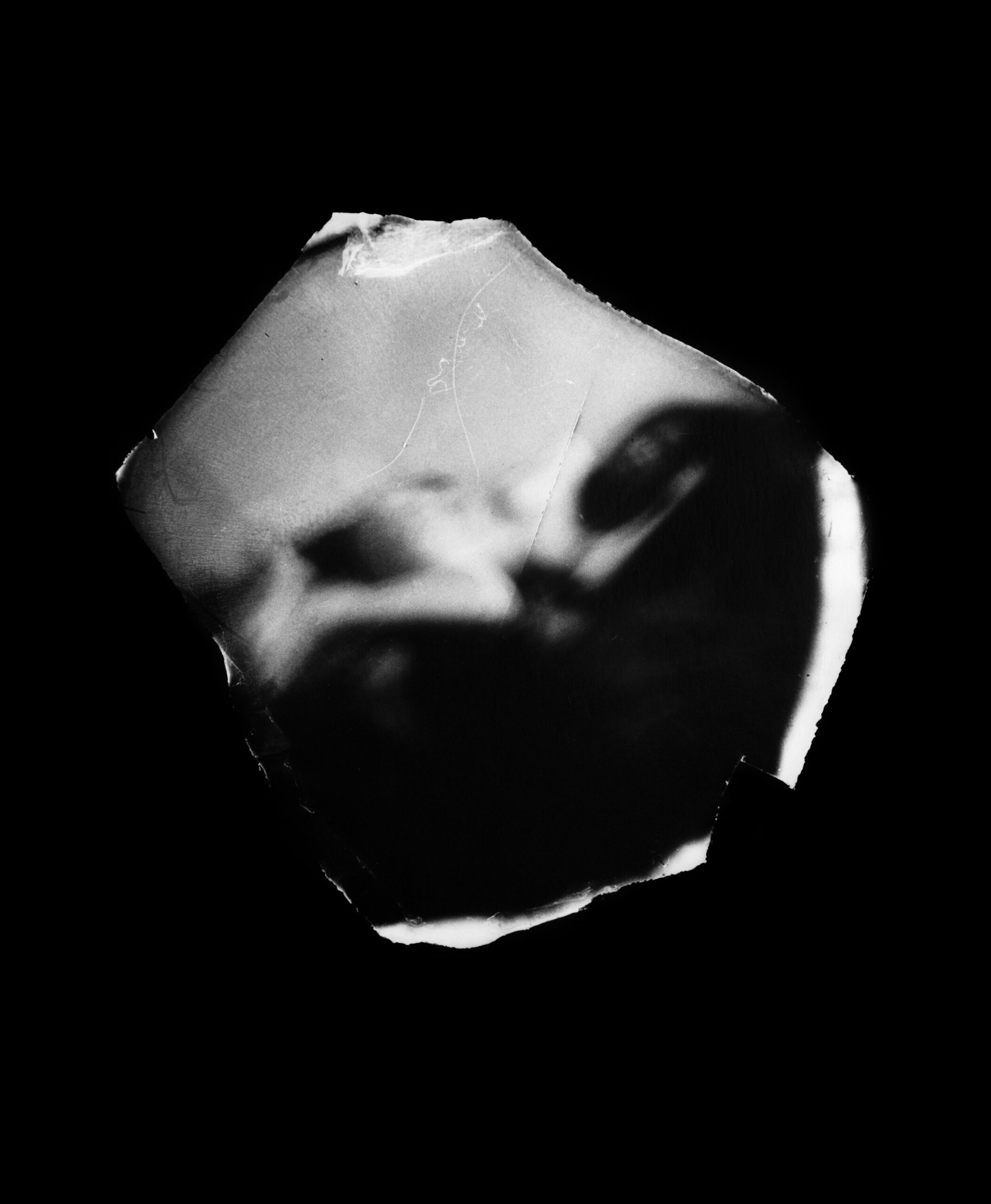
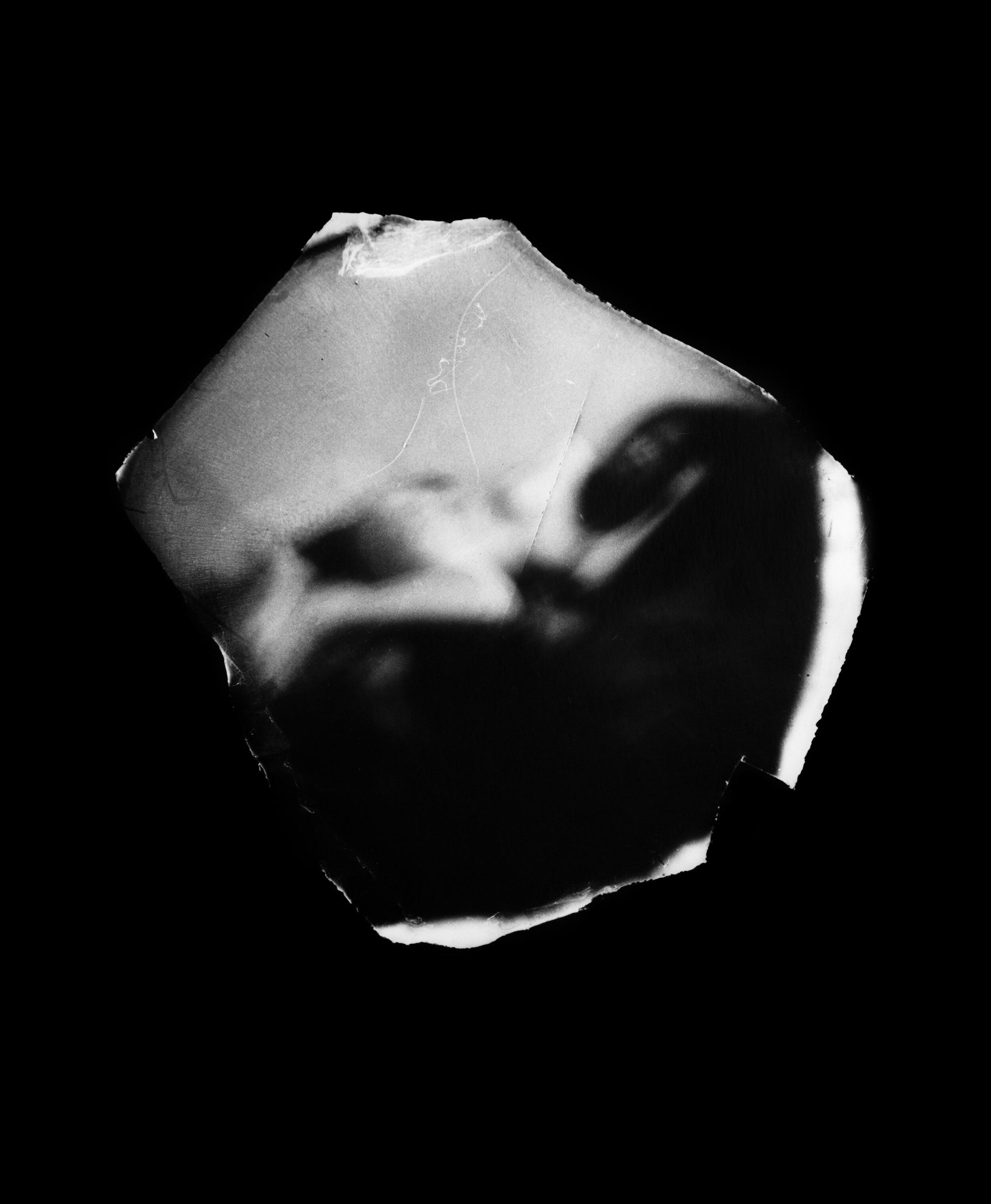
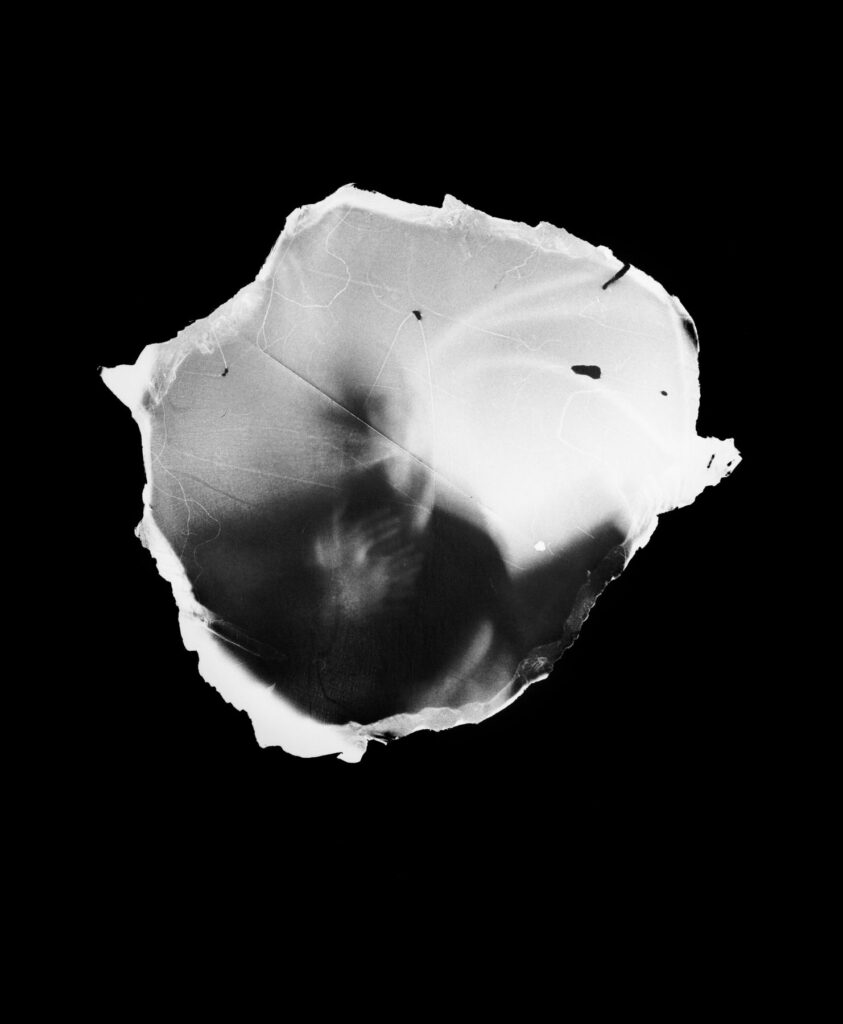
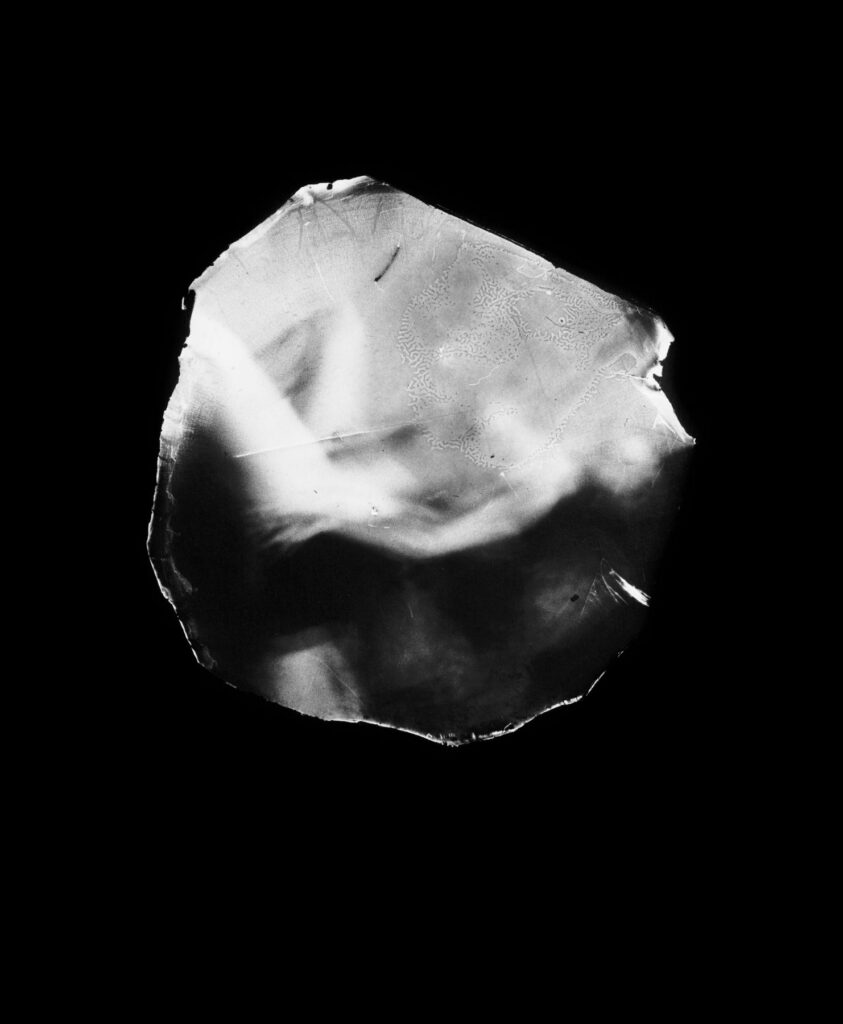
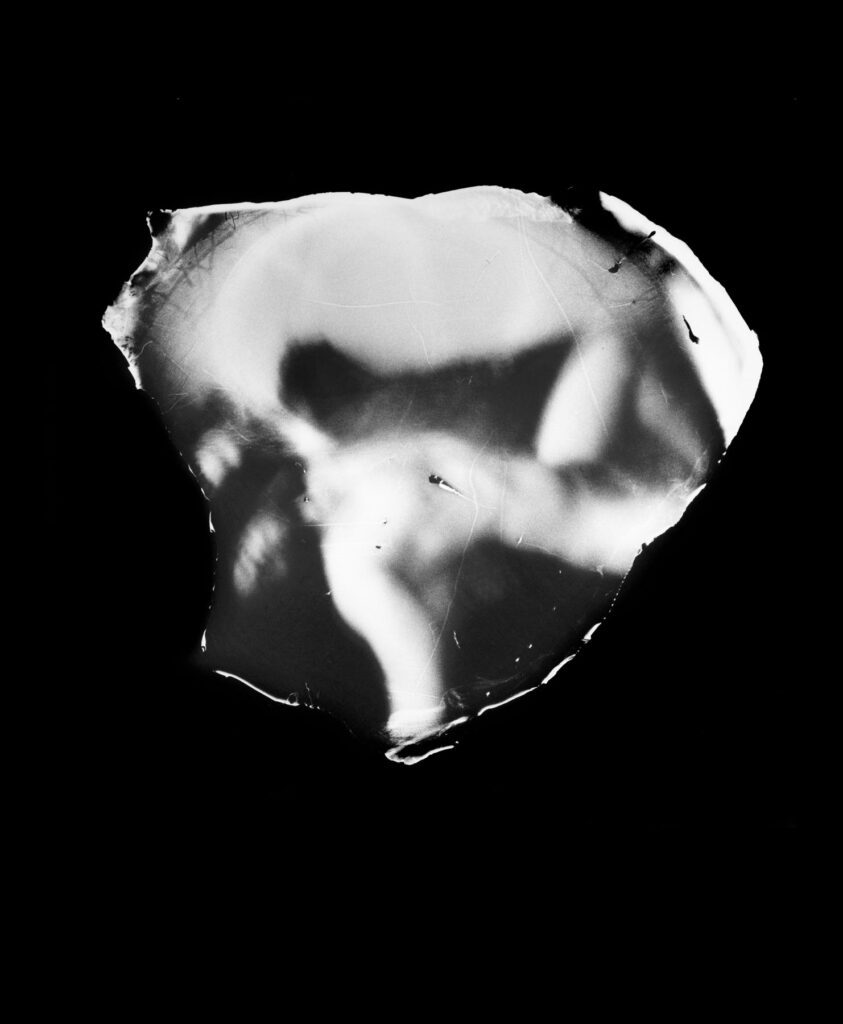
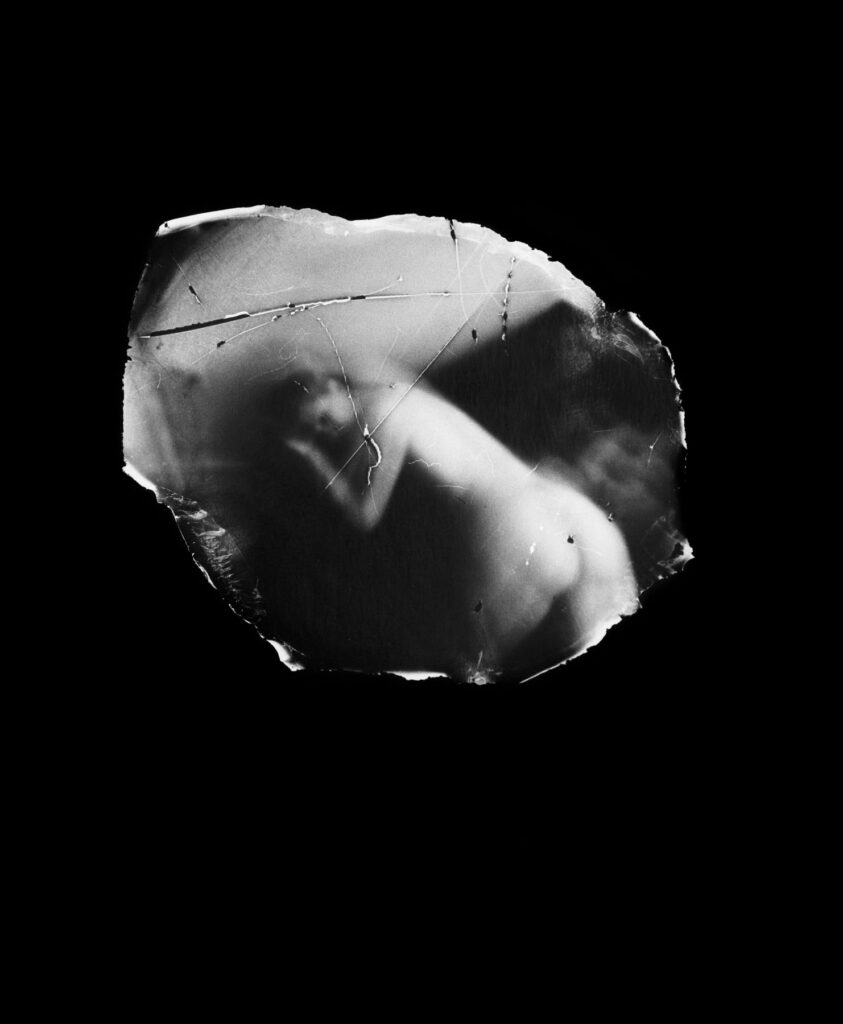
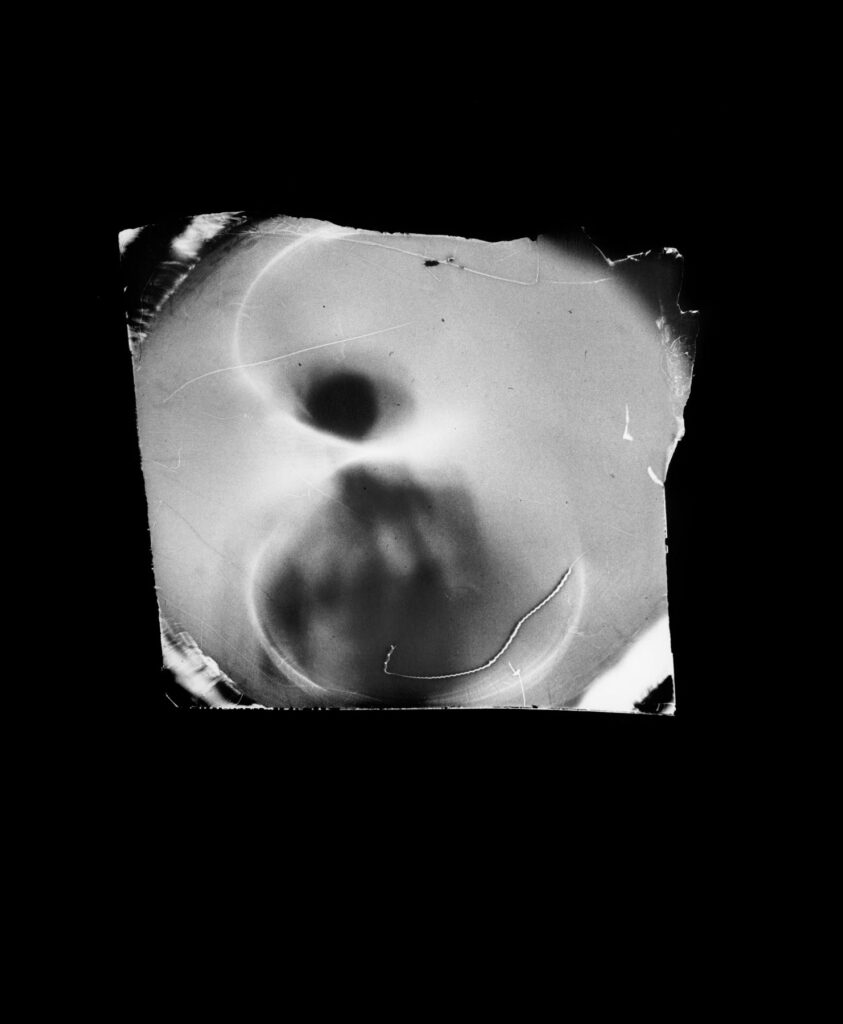
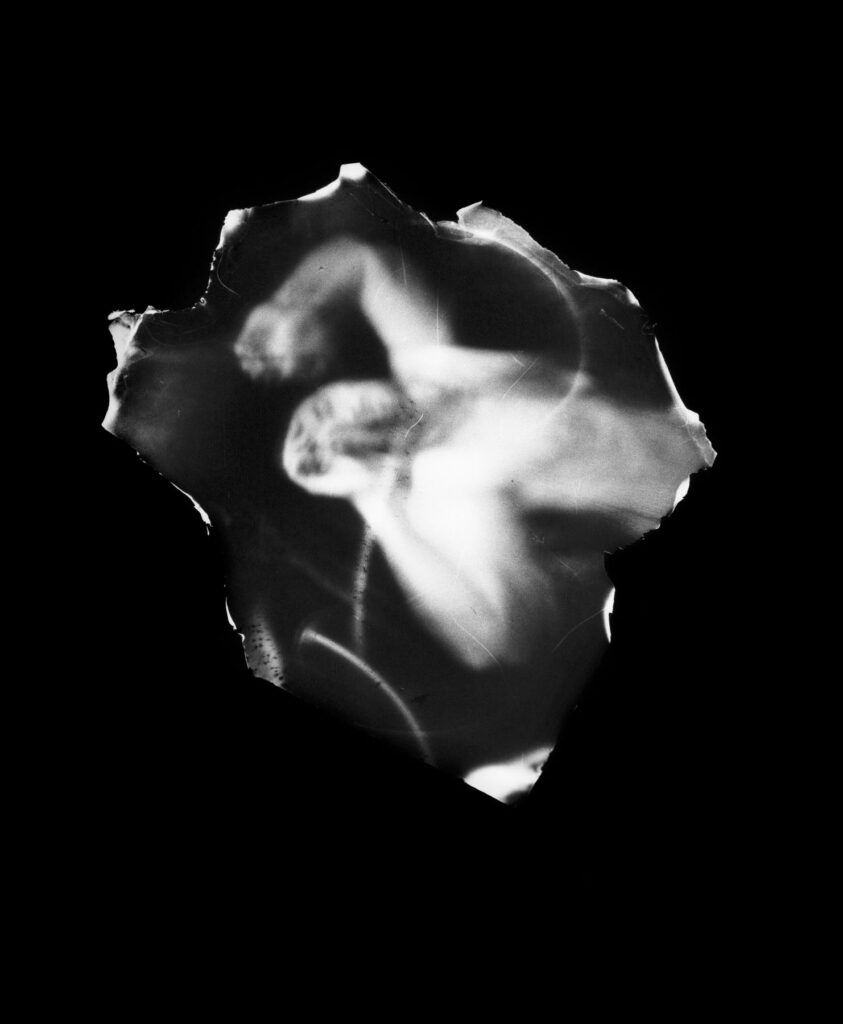
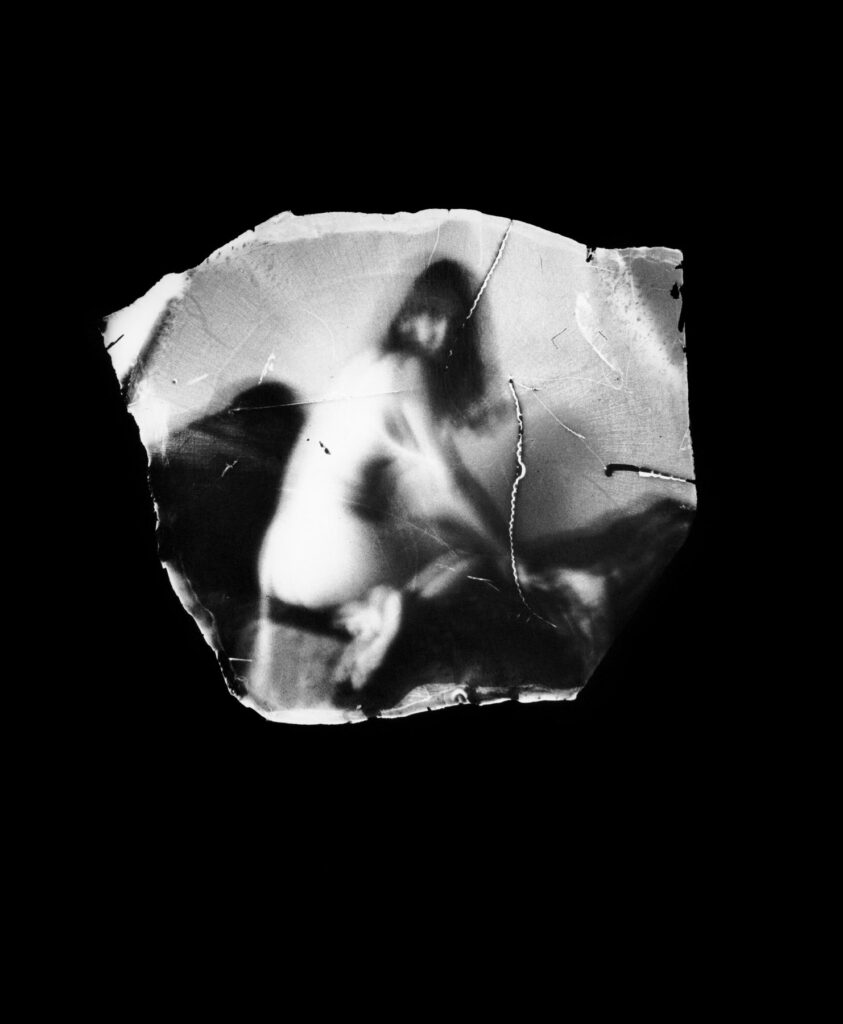
Lessnau’s approach is using a camera to capture her sexual partners of both past and present. An interesting way of using light and photo to highlight and further the female gaze movement. ‘The result is an experience of intimate space that feels at once voyeuristic and affecting.’
Circulation of the apparatus and therefore the image. Multiple mirroring. The visceral nature of being seen and digested.
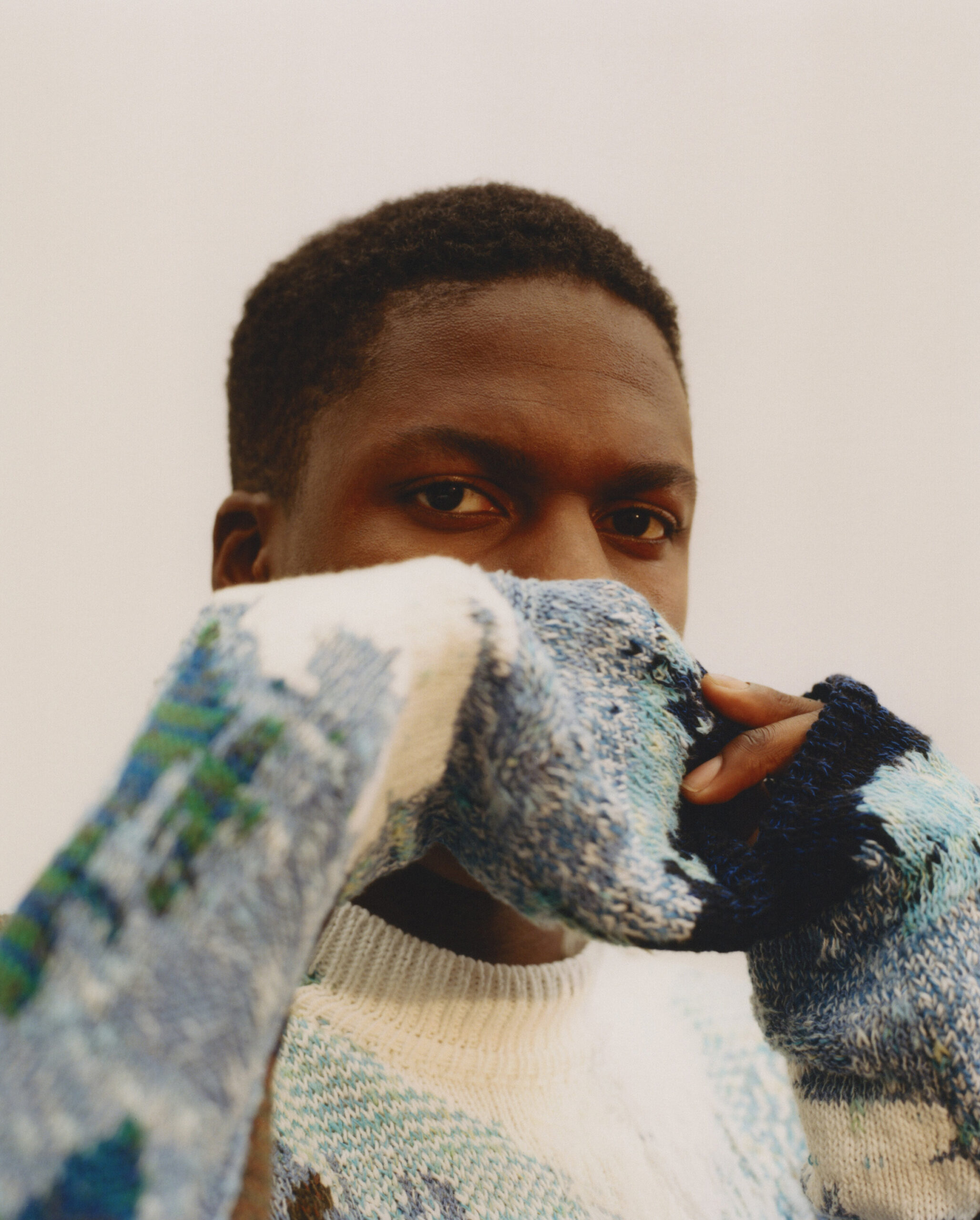

Since the release of his debut album Freudian in 2017, Daniel Caesar has been something of a [crooner redefining R&B and soul of the 1990s with elements of gospel, taken from DC’s upbringing, for a new generation. The album racked up a number of Grammy nominations at the 60th Grammy Awards, for Best R&B Album, Best R&B Performance for ‘Get You’ with Kali Uchis, before winning Best R&B Performance earlier this year for ‘Best Part’ with H.E.R. All by the age of 23 (24 now). Following the release of Caesar’s second album, Case Study 01, in June, he has been on tour since August in the US, and now in London ahead of UK tour dates (sell out) before Europe and Canada.


Earlier this week you reached a billion streams on Spotify which sounds pretty crazy to me. How does that feel?
It feels like good, I don’t think it’s something I ever considered. Like, a million, a couple of million, sounds doable, but a billion is outside of my range of perception.
It’s fair to say you’ve achieved quite a lot of commercial success without being signed to a major label. So considering that, have you got any intentions to expand Golden Child Records in the future at all?
Yeah, there’s always more that can be done. I have lots of ideas, who knows exactly what those turn into, but it’s not going to stop here.
Case Study 01 has a pretty distinct vibe to it compared with Freudian. Could you explain the process and the intentions behind the record?
With this one, I made a few beats first, and it was more about trying to get more complete ideas from my head out into the world, as opposed to writing on my guitar. So this time, some of the lyrics came long afterwards, which isn’t how it usually works for me. I had more to say also, so it’s a lot wordier; I was also being less practical in terms of ‘first verse, second verse’, etc. I was saying a lot more and doing a lot more this time around, and then, trying to organise all my thoughts when there’s more going on that usual.
There was one video you posted on Instagram – a behind the scenes of the recording with an open piano…
Yeah, that was for Too Deep To Turn Back. We got to explore a lot more this time. With the last album, we’d go in the studio and block out a week or less because we already knew what we were going to do. Whereas, with Case Study 01, we started creating the songs in the studio, so we had time to play around and discover new things. I liked that so much more because the studio recording process is when I get to do what I want, it’s like my favourite part. So, this time, we were at Abbey Road Studios and just fucking around with all the cool stuff, and we just stumbled across this sound we liked and found a part for it…
You’re commonly referred to as a crooner, a romantic, or like a present-day D’Angelo, is that something you ever anticipated? Or is that a strange thing to be?
I mean, I guess, yeah. Singing was always my thing at school. I was always the crooner guy, that was my shtick or whatever… That was me, I could sing the emotional songs…
Did you always want to pursue singing?
It was always one of the things I wanted to be, not the first thing, but one of. When you’re little and you tell adults, well-meaning adults, what you want to be, they try and help you manage your expectations… It’s like, chances are you’re not going to be able to do it, in the nicest way, and so you try and realign, and pick something more practical. So you try and fit into what you think you’re supposed to be doing, and then you’re just not good at that. And so, it always came back to singing.


Something that is striking about the visuals for your albums and videos is of you as what seems like an isolated figure (especially in the spacesuit). Is there anything in that?
When you say it, it makes sense to me, but I don’t think it was intentional like, ‘let’s do this’. I was just feeling isolated or, trying to connect, but being unable to, you know? I’d say one of the themes is about wanting love, wanting a connection, and it’s always fleeting or unrequited.
There’s a moment in your conversation with Brandy where she remarks that you’re a great storyteller; How important is storytelling to you as a songwriter?
It’s important, but I don’t think it’s the only tool necessary. I think the most important thing is conveying the feeling, whether or not you’re being descriptive and articulate, whether you’re retelling a story, or you’re just saying what’s need to be said to convey the idea or the feeling. I think storytelling is important; it helps make things more rhythmic. But the feeling is the most important thing, however it is you get that across.


You mentioned that, with this album you didn’t write some of the lyrics until afterwards but, with songwriting, where do you start and what’s your process?
It usually doesn’t come ‘til I’m in a really good mood or really bad mood. Or, say, I have a conversation and I hear a phrase that I like, it’s usually something that sounds paradoxical. Just something clever. Then, chords might come and surround it. It always come through extreme emotion, energy and excitement. Usually, honestly, I’ll be in the shower and I’ll like, drop everything and do the voice note. Sometimes it turns into a song, sometimes it’s just a short little note and I’ll send it over to Jordan [Evans, Caesar’s manager] and, he puts it in a folder with thousands of others…




What does ‘reinvention’ mean to you?
Reinvention is death and rebirth. No one is really one thing, no one has a fixed identity. I think growing is moving from identity to identity. I mean like, what I’m doing is the extreme art version, where I’m an astronaut [for Case Study 01]. But, it’s about growing through your life, finding new parts about yourself and taking it on fully.
How would you relate reinvention to something that you’ve gone through or that’s happened to you specifically?
I think everybody is the way they are because of things that have happened to them, so there’s no one moment I can think of… But, through trauma, through the good things and the bad, these things chip away at the sculpture that becomes the final ‘thing’.
Team
Photography · JACK JOHNSTONE
Creative Direction · NIMA HABIBZADEH and JADE REMOVILLE
Fashion · JAY HINES
Fashion Assistant · SERGIO PEDRO
Grooming · ELAINE LINSKEY
Manicurist · JULIA BABBAGE
Interview · ELLIE BROWN
Special Thanks to · Toast Press
Designers
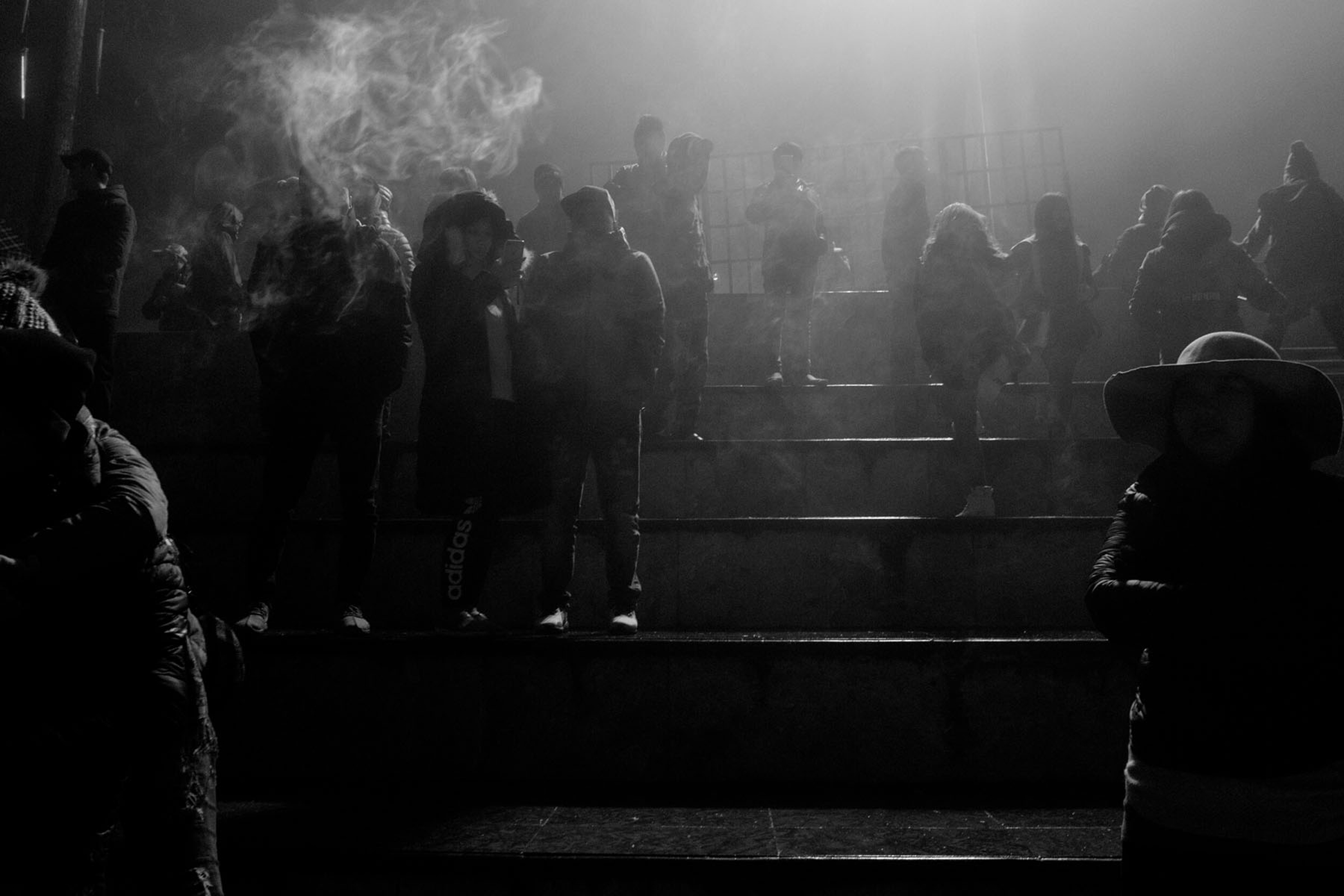















Credits
Photography · Chu Viêt—Hà
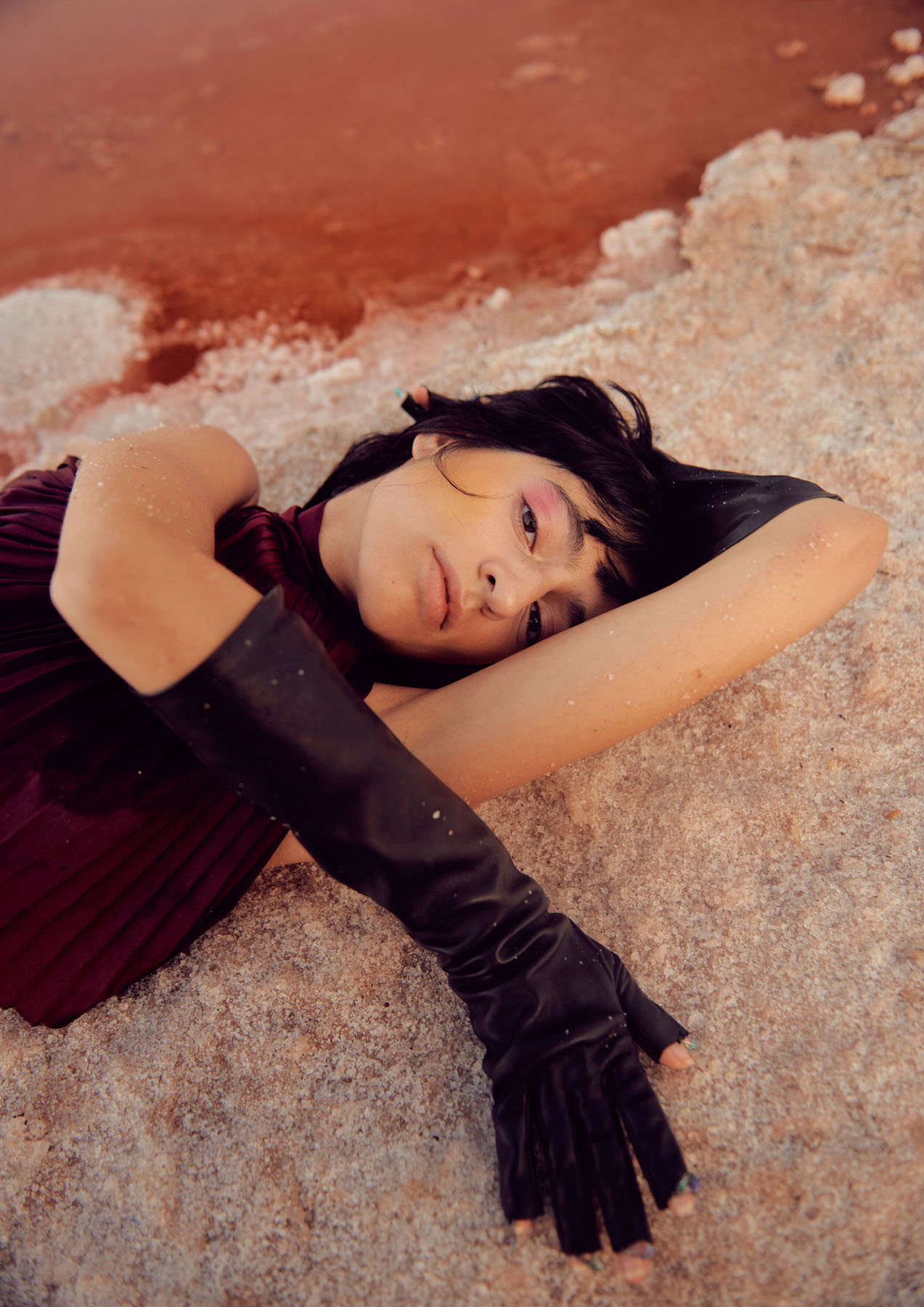
















Team
Photography NOÉMI OTTILIA SZABO
Fashion LYLA CHENG
Hair and Make-Up PETER SCHELL
Model AOIFE LOU from Le Management
Designers
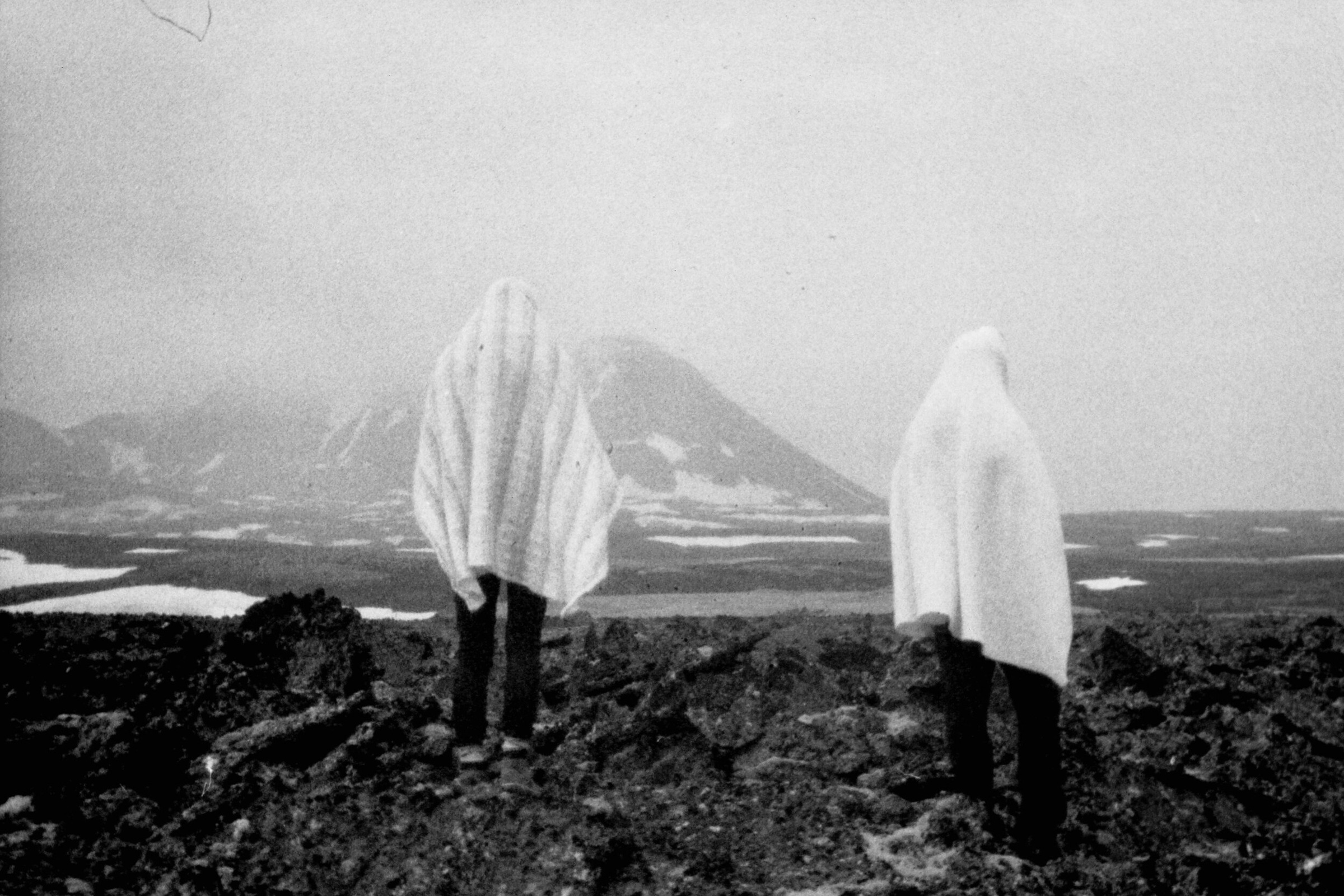










Apparition Disparition is a series of photographs that belong to a larger multi-disciplinary ongoing project called MOSI (meaning moss in Icelandic). MOSI was initiated in 2016 by french photographer Aëla Labbé and icelandic choreographer Bára Sigfúsdóttir in collaboration with norwegian composer Eivind Lønning and french performer Stéphane Imbert. Body, space, instincts, nature, flesh, soil, sound, rock, breath, softness, matter, water, presence, time, landscape, air. In search of connections between what is visible and invisible.
Apparition Disparition was created in Mývatnssveit, Iceland during May/June 2016 and July 2018.